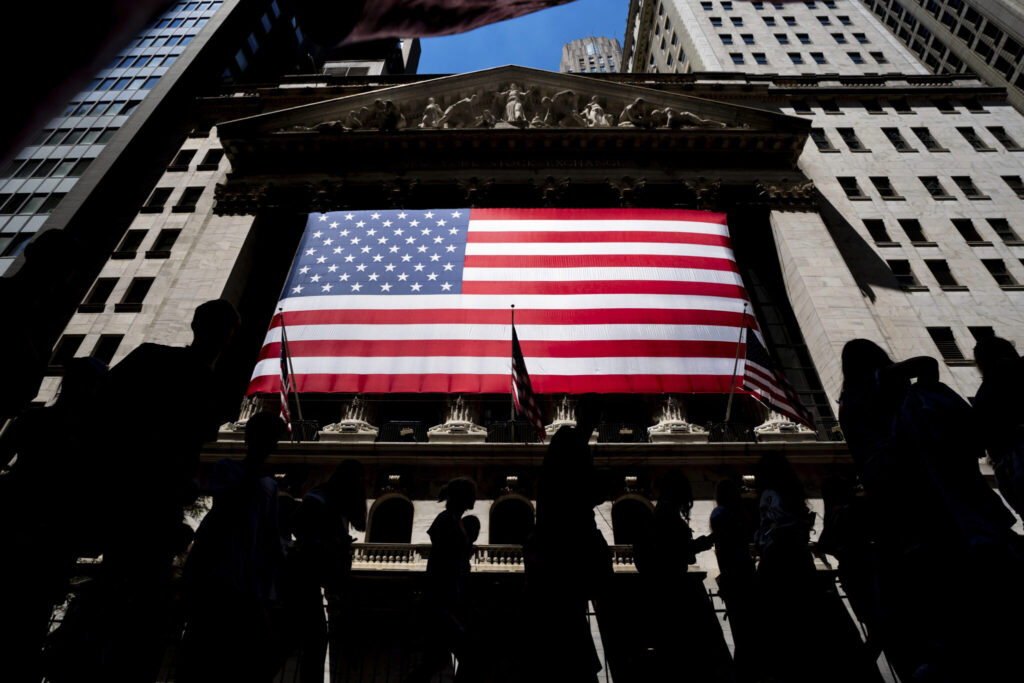U.S. stocks are slipping Monday as Wall Street pushes out forecasts for when interest rates will start easing from the strictest levels in two decades. The S&P 500 was 0.2% lower in early trading, coming off another all-time high and another winning week. The Dow Jones Industrial Average was down 143 points, or 0.4%, and the Nasdaq composite was 0.1% lower.
Quick Read
- U.S. stocks experience slight declines, with the S&P 500 down 0.2%, the Dow Jones Industrial Average falling by 143 points or 0.4%, and the Nasdaq composite dropping by 0.1%.
- Earnings season sees mixed results, with Estee Lauder’s shares jumping 14.5% after exceeding expectations, while McDonald’s shares fall 3.3% despite higher-than-expected profit due to slightly missed revenue forecasts.
- Companies underperforming analysts’ earnings estimates face steeper stock penalties, as observed by Bank of America strategists.
- Bond yields increase, influenced by delayed expectations for Federal Reserve interest rate cuts, pushing the yield on the 10-year Treasury to 4.12%.
- Federal Reserve Chair Jerome Powell suggests potential rate cuts later in the year, hinting at a possible start in June rather than March, according to trader speculations.
- Despite economic pressures, the strong U.S. job market and the possibility of a “soft landing” for the economy provide some optimism.
- Air Products and Chemicals’ shares drop 15.2% due to disappointing profit and revenue figures, while Caterpillar’s shares rise 4.5% after surpassing profit expectations.
- Chinese stock markets fluctuate after Beijing’s commitment to support financial markets, with the Shanghai index dropping 1% amid concerns over the real-estate sector and economic recovery.
The Associated Press has the story:
Most of Wall Street slips as traders delay forecasts for rate cuts
Newslooks- NEW YORK (AP) —
U.S. stocks are slipping Monday as Wall Street pushes out forecasts for when interest rates will start easing from the strictest levels in two decades.
The S&P 500 was 0.2% lower in early trading, coming off another all-time high and another winning week. The Dow Jones Industrial Average was down 143 points, or 0.4%, and the Nasdaq composite was 0.1% lower.
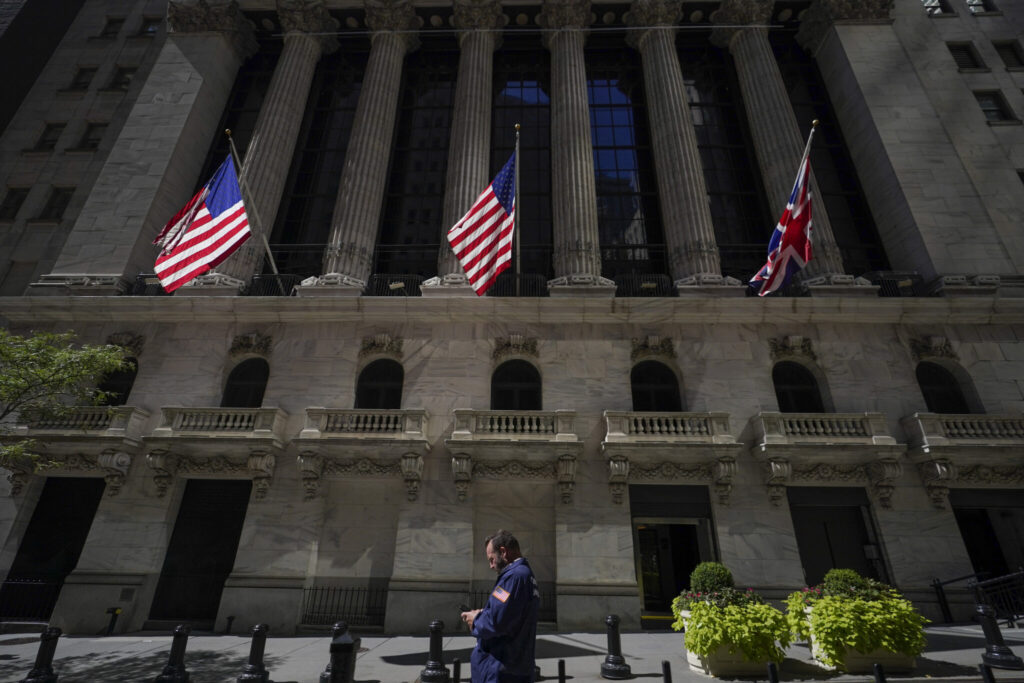
Earnings season is near its midpoint, with roughly half the companies in the S&P 500 having reported their latest results, including most of the market’s most influential. Estee Lauder jumped 14.5% after it reported better revenue and profit than analysts expected. McDonald’s, meanwhile, fell 3.3% despite reporting stronger profit than expected. Its revenue for the latest quarter fell just short of forecasts.
Companies that have been missing analysts’ estimates for earnings this reporting season have been seeing their stocks get punished even more than usual, according to strategists at Bank of America.
Stocks broadly felt some pressure from another rise for yields in the bond market. They rose as traders on Wall Street delayed their expectations for when the Federal Reserve will begin cutting its main interest rate.
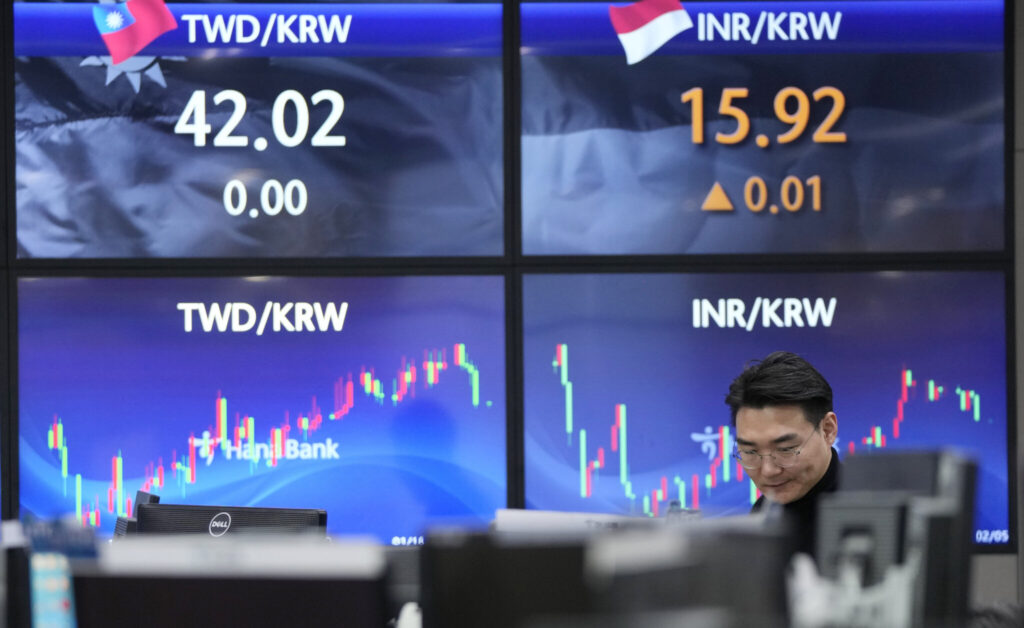
The Fed has already yanked its federal funds rate to the highest level since 2001 in its efforts to bring down high inflation. High rates intentionally slow the economy by making borrowing more expensive and hurting investment prices.
Federal Reserve Chair Jerome Powell said again in an interview broadcast Sunday that the Fed may cut interest rates three times this year because inflation has been cooling. But he also indicated again in the interview on “60 Minutes” that the Fed is unlikely to begin in March, as many traders had earlier hoped.
Following the interview, traders pushed out some bets for the cuts to begin in June instead of May, according to data from CME Group.
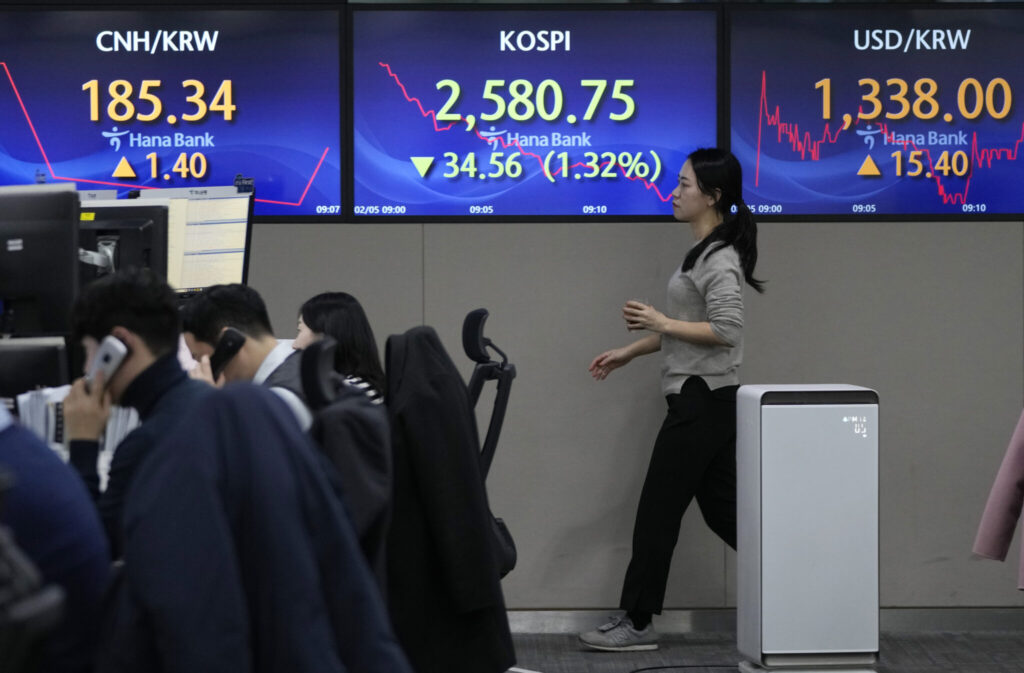
The yield on the 10-year Treasury climbed to 4.12% from 4.09% late Friday and from less than 3.80% late last year.
At Goldman Sachs, economist David Mericle is still forecasting cuts to begin in May. Following Sunday’s interview, though, he also sees a greater chance of rate cuts beginning later than that and happening in a steeper fashion.
Interest rates are one of the main levers that set prices for stocks. While that may be under pressure because a strong economy is forcing delays to expectations to rate cuts, the other lever may be getting a tailwind at the same time.
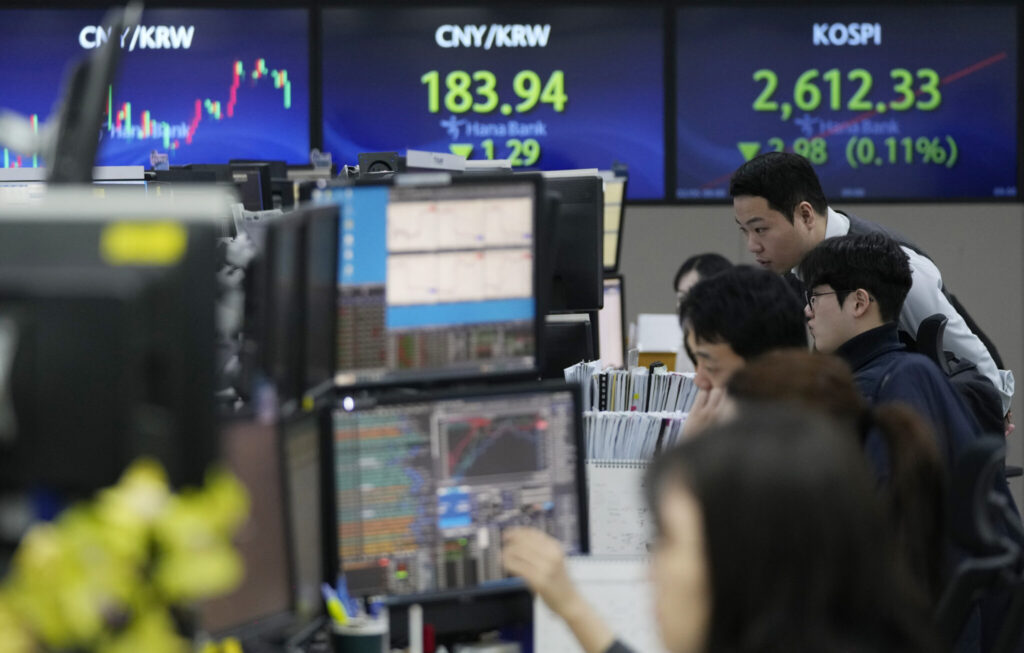
The economy has blasted through worries about an imminent recession, with the most recent evidence coming last week from a report showing U.S. employers hired many more workers last month than economists expected. That should help drive growth in profits for companies, which tend to drive stock price movements over the long term.
“On balance, the details of the report were largely positive and point towards continued momentum in the labor market and increased likelihood of a soft landing” for the economy, said Deutsche Bank senior U.S. economist Brett Ryan.
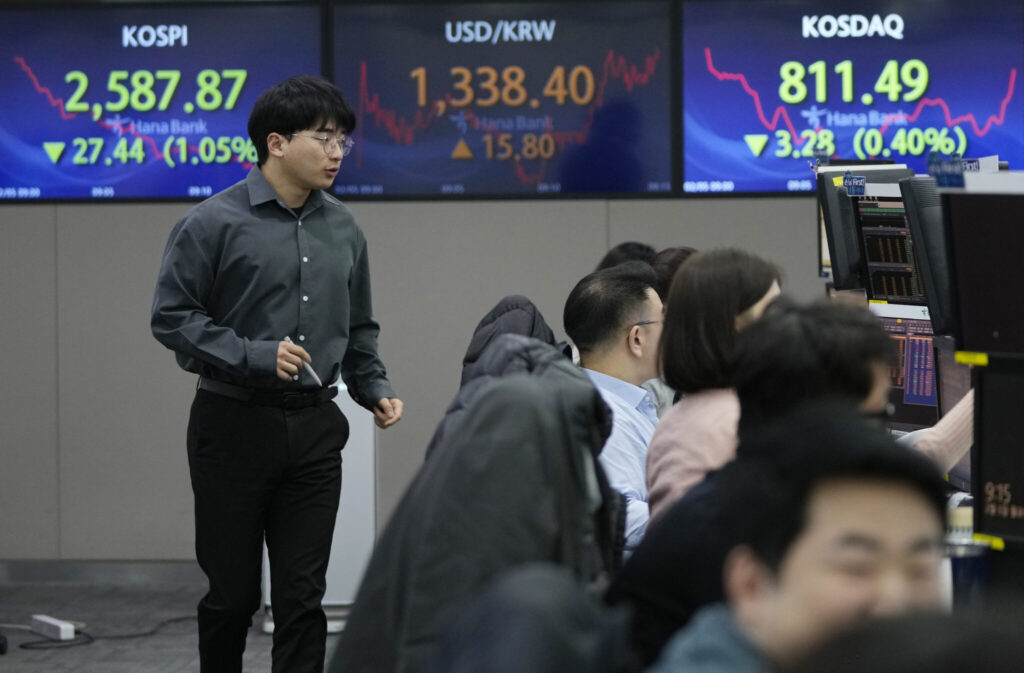
Elsewhere on Wall Street, Air Products and Chemicals slumped 15.2% after it reported profit and revenue that fell short of analysts’ expectations. Caterpillar rose 4.5% after its profit for the latest quarter topped forecasts.
In stock markets abroad, Chinese indexes swung sharply following Beijing’s latest pledge to shore up its financial markets.
Stocks sank 1% in Shanghai after coming off their worst week in five years. Chinese stocks have struggled on worries about a troubled real-estate industry and a disappointing overall economic recovery.
___

